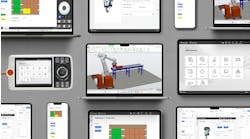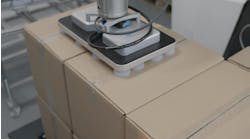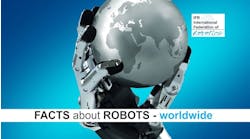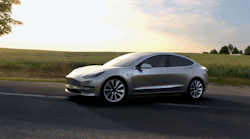Elon Musk, determined to turn his electric-car company into a great maker of things, said that he keeps a sleeping bag in a conference room adjacent to Tesla Motors Inc.’s production line in Fremont, California.
He beseeched the best manufacturing people in the world to join the company, which is preparing to launch a Model 3 sedan that is designed for ease of manufacturing with fewer “bells and whistles” than the Model X sport utility vehicle. The SUV was recalled soon after deliveries began.
Musk said on Wednesday that he expects to produce as many as 200,000 of the more-affordable Model 3 sedans in the second half of next year. The youngest publicly held U.S automaker aims to make more than 80,000 vehicles this year and reach 500,000 by 2018 -- two years sooner than originally planned. Annual output by the end of the decade may be as many as a million autos, he said.
While Tesla has developed models that attract consumers and inspire investors, that enthusiasm has often led to disappointment as targets and deadlines get pushed back. Now Musk, with about 400,000 Model 3 pre-orders in hand, is accelerating manufacturing timelines to meet demand -- even as the automaker loses two top production executives. The company delivered just 50,658 vehicles in 2015.
“Tesla is hell-bent on being the world’s best manufacturer. We are trying to get as many EVs on the road as possible. What’s the limiting factor? It’s production of the car,” Musk said Wednesday on a conference call with analysts. “We’ve got to figure out: How do we get super-good at making large, complex objects?”
‘Challenging’ Goals
Musk said that Tesla will be adding manufacturing expertise in the coming weeks and that it will be more stringent about deadlines with suppliers. The company’s gigafactory for battery production, under construction east of Reno, Nevada, remains on track to make the first battery cells in the fourth quarter of this year. The factory is crucial for the company’s emerging Tesla Energy storage business as well as mass-market automaking.
“Increasing production fivefold over the next two years will be challenging and will likely require some additional capital, but this is our goal and we will be working hard to achieve it,” Musk said in a letter to investors posted on Tesla’s website Wednesday.
In 2018, the auto factory will probably make 100,000 to 150,000 Model S and Model X vehicles and 300,000 to 400,000 Model 3 cars, he said in the conference call. He said it’s hard to predict, though.
The shares rose 4.1 percent to $231.70 at 8:04 a.m. New York time before regular trading. They had declined 7.3 percent this year through Wednesday’s close.
The company’s first-quarter loss, excluding certain items, widened to 57 cents a share, Tesla said in the letter. Analysts on average had estimated a 60-cent loss, according to data compiled by Bloomberg. Revenue, adjusted for lease-related deferrals, rose to $1.6 billion, in line with the $1.61 billion average projection.
“This was hardly the negative quarterly result some were expecting, but we believe bears will key in on the change in tone around ‘cash need’ or ‘capital raise’ from the most recent quarterly discussion,” said James Albertine of Stifel Nicolaus & Co. in a research note. “That said, we think a capital raise would be completely reasonable in light of higher initial Model 3 demand than expected.”
Cash and equivalents rose 20 percent from the end of 2015 to $1.44 billion. Tesla said it drew $430 million against its asset-based credit line and has since repaid $350 million of that. Free cash flow was negative by $466.5 million.
Production Progress
Tesla, which is losing two top manufacturing executives, has been increasing output of the Model X sport utility vehicle, after the SUV’s rollout has been marred by customer complaints about faulty sensors on the falcon-wing doors and a recall of all 2,700 delivered because of safety concerns regarding the third-row seats. The company shipped 14,810 vehicles during the first quarter, including about 2,400 Model Xs. Tesla forecasts making 20,000 vehicles in the second quarter and delivering 17,000.
“The Model X problems seem to be in the rear-view mirror,” said Ben Kallo, an analyst with Robert W. Baird & Co. “Commentary around X and S demand and the production ramp is very positive.”
The Model X and the Model S sedan are built on a shared assembly line in Fremont, California. On March 31, Tesla revealed a prototype of the Model 3, a more affordable car that is slated to reach the market in late 2017. Consumer interest in the Model 3 has been high, with about 400,000 pre-orders at $1,000 each. The overwhelming majority of Model 3 reservation holders -- 93 percent -- are customers new to Tesla as a brand.
Executive Departures
Greg Reichow, Tesla’s vice president of production and one of its highest-paid executives, and Josh Ensign, vice president of manufacturing, will leave the company. A Tesla spokeswoman confirmed both departures and said Reichow will remain until his replacement is found.
A person familiar with the situation who isn’t authorized to speak about the matter said the executive changes are linked to delays, glitches, and a recall that have bedeviled Tesla’s Model X. Tesla denied any connection between the departures and production problems with its SUV.
“This is not about the Model X,” said a Tesla spokeswoman. “After being at Tesla for over five years and leading its production team for the past three years, Greg Reichow has announced his intention to take a leave of absence from Tesla so that he can have a well-earned break.”
The latest high-level personnel changes brings to five the total number of Tesla vice presidents who have left the company this year, and Reichow marks the biggest departure. He served as the leader of car production and had been one of Tesla’s highest-compensated employees, making almost $6.4 million in cash, stock, and options in the last two years, according to company filings. Tesla did not elaborate on Ensign’s plan to leave.
Other senior executives who have left Tesla this year include Michael Zanoni, vice president of finance and worldwide controller; James Chen, vice president of regulatory affairs and deputy general counsel; and Ricardo Reyes, vice president of global communications. Tesla said that of 40 executive positions filled in the last year, only one has left. Half the people who report directly to Musk have been at the company for more than five years.
Musk said on the call that the company will announce significant hires in the coming weeks.










